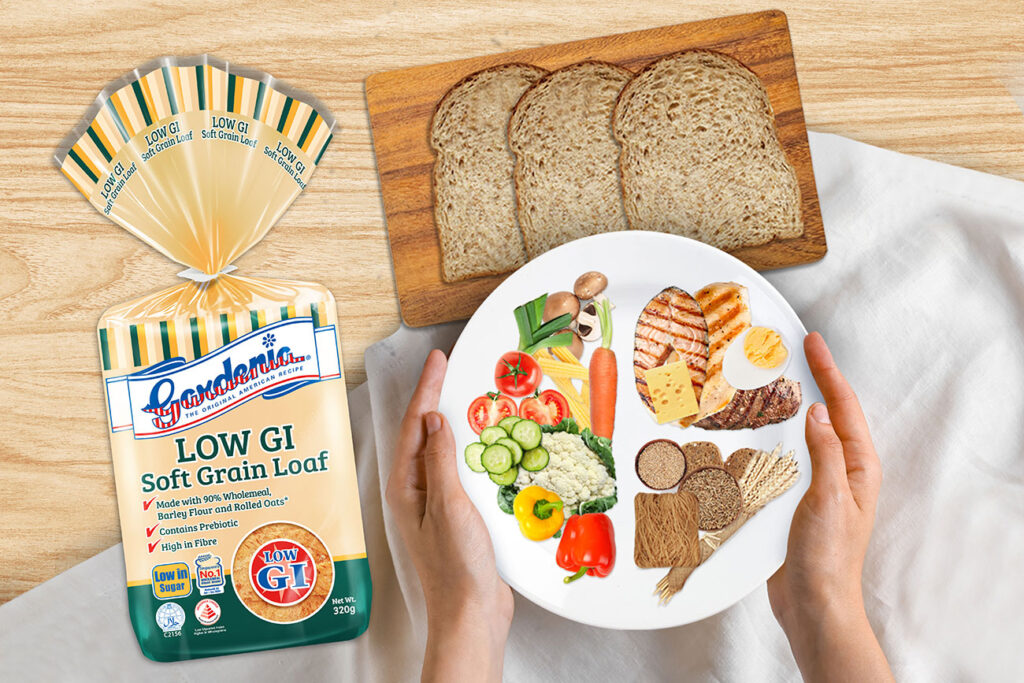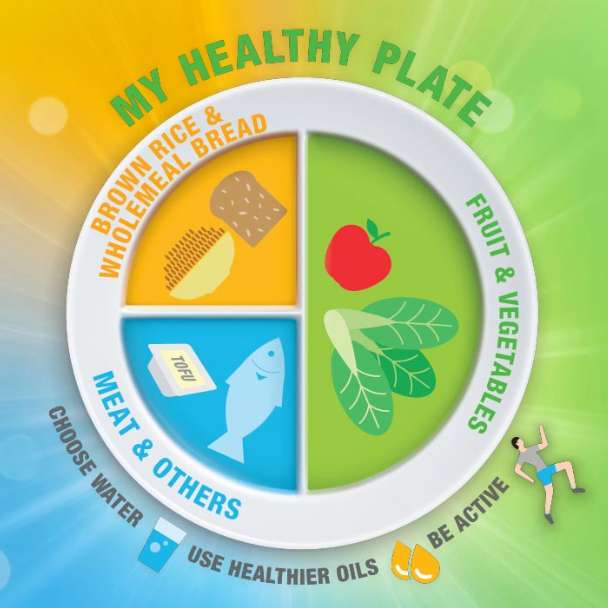After the stretch of festivities from Christmas to Chinese New Year, some of us may be looking for ways to shed post-festivities weight gain. Losing these weight gain simply requires making conscious efforts to your daily lifestyle. Here are some tips to help you return to a healthy eating pattern for better weight management:
Engage in regular physical activity weekly
Shedding off excess weight requires calorie deficit, and exercising is a great way to burn calories. Aim for regular moderate-vigorous physical activity (e.g jogging, dance-aerobics) for 150 minutes per week. Walk or use the stairs more frequently to increase your heartrate, step count and calorie burn.
Include lower Glycemic Index (GI) foods in your meals

Foods with a low GI (55 and below) includes some fruits, vegetables, legumes (beans, lentils, peas), wholemeal pasta and low GI products (e.g low GI bread). Foods with a lower GI can be helpful for managing blood sugar and energy levels as it produces a more gradual and slower rise in blood sugar levels. In turn, insulin levels, which plays a role in fat metabolism, are better managed. Low GI products can also promote satiety to prevent overeating and help with weight management.
GI of carbohydrate staples:
|
Food |
GI |
|---|---|
|
White bread |
75 |
|
Low GI soft grain loaf |
<55 |
|
Low GI Nutri Multi-Grain Loaf |
<55 |
|
White rice (Jasmine) |
78 |
For some of us with busy lifestyles, low GI bread paired with protein sources, vegetables and/or fruits can be a quick and simple way to create a balanced meal option.
Fibre, protein and fats can lower the GI of a meal. But it is still important to choose lower-fat options and use healthier cooking methods to reduce calorie and fat intake.
Follow My Healthy Plate
Aim to return to regular meal times throughout the day and practice portion control by following My Healthy Plate. Each meal should include the essential food groups in the following portions:
- 1/4 plate of wholegrains
- Wholegrains include brown rice/noodles or wholemeal bread, and are sources of complex carbohydrates
- Wholegrains or low GI products usually take a longer time to digest, allowing for a more gradual and slower increase in blood sugar levels, and promotes fullness
- 1/4 plate of protein sources
- Examples of good sources of protein include meat, fish, eggs, tofu, legumes (beans, lentils, peas) and low-fat dairy products
- 1g of fat provides 9 calories. To help you reduce your fat and calorie intake, remove the skin and fats from poultry or meats and choose low-fat dairy.
- 1/2 plate of vegetables and a serving of fruit
- Fruits and vegetables are good sources of dietary fibre, which is helpful for weight management as it helps to promote satiety and prevent over-eating. Additionally, they also provide vitamins, minerals and antioxidants.

Source: HealthHub
Hydrate yourself with no-sugar drinkss
Keeping yourself well hydrated before a meal can help to temporarily promote satiety. Most drinks contain sugar and calories, and minimal beneficial nutrients. Water or drinks with no sugar would be helpful for controlling blood sugar levels and your caloric intake.
References:
- https://www.healthhub.sg/programmes/diabetes-hub/understanding-carbohydrates
- https://www.healthhub.sg/live-healthy/the-gi-values-of-common-foods
- https://static1.straitstimes.com.sg/s3fs-public/attachments/2016/05/06/ST_20160506_RICE06B_2270547.pdf
- https://www.healthhub.sg/live-healthy/healthy%20weight%20loss
- https://www.healthhub.sg/live-healthy/the-drop-of-life—six-reasons-to-drink-water
- https://www.healthhub.sg/live-healthy/move-more-live-longer
- https://www.gisymbol.com/gi-and-weight-management

